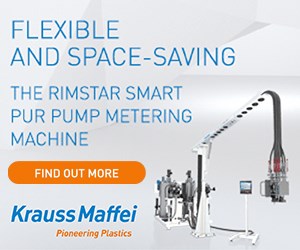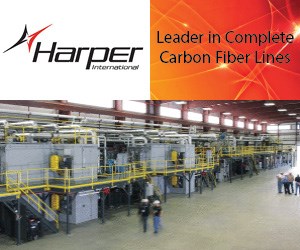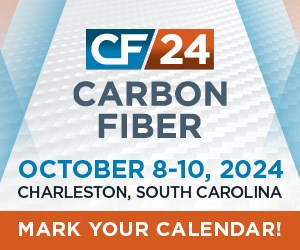AMRC's high-pressure RTM and composite press facility open for R&D collaboration
The University of Sheffield’s Advanced Manufacturing Research Centre says its high-pressure RTM and composite press facility is now ready to host collaborative R&D projects with composites industry manufacturers.
The Composite Centre at the University of Sheffield’s Advanced Manufacturing Research Centre (AMRC, Sheffield, UK) announced May 2 that its high-pressure RTM and composite press facility is now ready to host collaborative R&D projects with interested manufacturers from the composites industry.
The bespoke KraussMaffei (Munich, Germany) RimStar Compact is the most advanced High-Pressure Resin Transfer Moulding (HP-RTM) system operational within a UK research institution and is being used by the AMRC to support its research into developing novel composite technologies.
The system has dual resin feeds and mixing heads; where the resin and hardeners are mixed at the impingement head – located in a closed, matched mould – under a high-pressure colliding process to be instantaneously injected into the preform. The multiple heads mean resin flow rate is higher and large, but lightweight net-shape parts can be achieved with the maximum amount of resin input.
AMRC Composite Centre Research Engineer, Darren Wells says,
“This unique feature of the system allows us to extend the range of highly reactive, but fast acting resins and hardeners we work with; giving us greater flexibility to conduct research with novel or unusual composite materials and produce more complex geometric component structures. These highly reactive resins are being used more frequently within HP-RTM techniques and have made it possible for us to bring cure times down to within three minutes.”
A UK manufactured press with two separate lower platens that allow for both heated and cooled processes complete the system. Their large working envelopes can be adapted for more complex tooling geometries and will open up opportunities for manufacturers where high customization, but high-volume production is required.
According to Wells, benefits of using this new system for the centre’s research include improved processing times, cost and also improved use of raw materials as no pre-preg is required.
Wells says,
“On our bespoke KraussMaffei high-pressure RTM system, the injecting and curing of composites all happens in the same mould, which means parts are structurally sound and consistent in quality and material characteristics. This means there is a higher repeatability of the process, as it removes the variability of quality within pre-preg materials that stems from the laying and curing processes. Often pre-preg additives are used to improve toughness during composite curing processes, especially for safety critical or structural composite components, but the viscosity is too high to inject under HP-RTM processes; so we are looking at lower viscosity additives and how they are mixed into the resin or preform so they don’t disrupt fibre layout.”
The AMRC Composites Centre now has the capacity for a variety of research collaborations to utilize this cutting edge high-pressure composite facility. The AMRC Composite Centre can be reached at compositecentre@amrc.co.uk or +44 (0)114 222 1747.
Related Content
-
Materials & Processes: Fabrication methods
There are numerous methods for fabricating composite components. Selection of a method for a particular part, therefore, will depend on the materials, the part design and end-use or application. Here's a guide to selection.
-
Novel composite technology replaces welded joints in tubular structures
The Tree Composites TC-joint replaces traditional welding in jacket foundations for offshore wind turbine generator applications, advancing the world’s quest for fast, sustainable energy deployment.
-
RUAG rebrands as Beyond Gravity, boosts CFRP satellite dispenser capacity
NEW smart factory in Linköping will double production and use sensors, data analytics for real-time quality control — CW talks with Holger Wentscher, Beyond Gravity’s head of launcher programs.

.png;width=70;height=70;mode=crop)



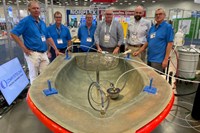
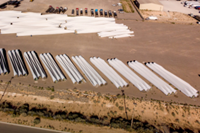

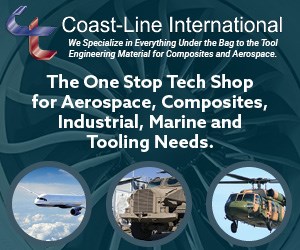



.jpg;maxWidth=300;quality=90)
